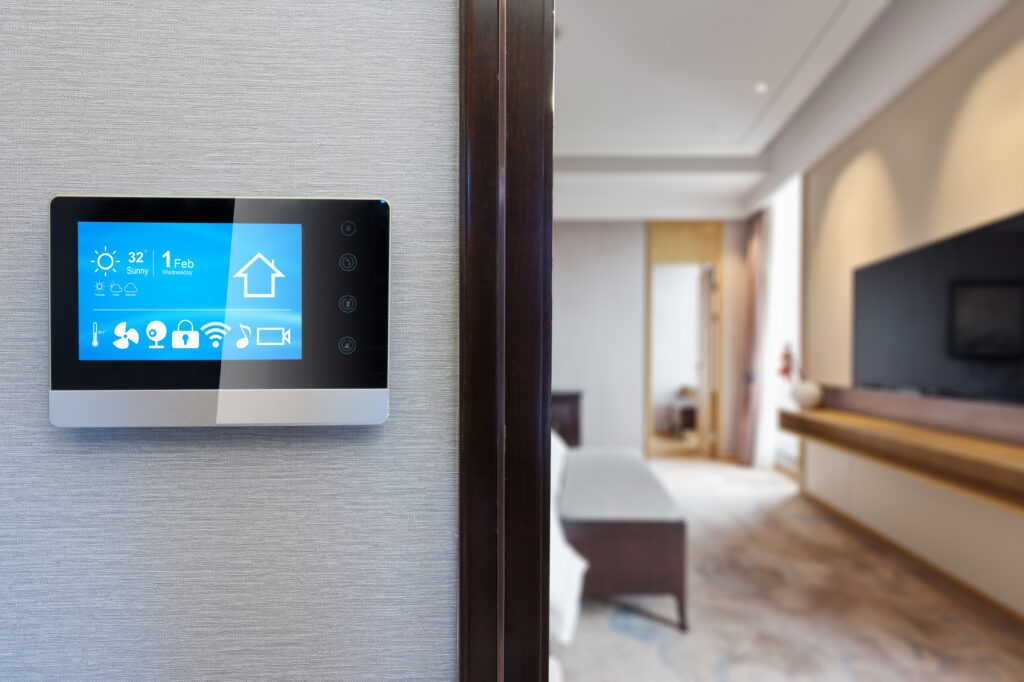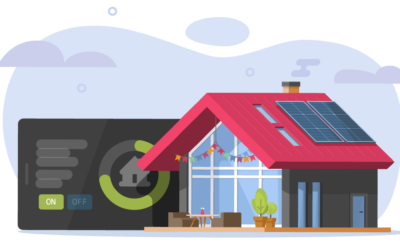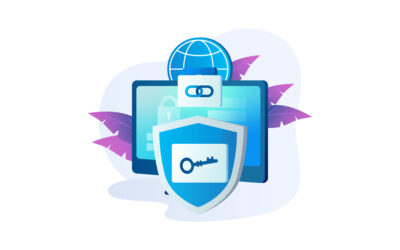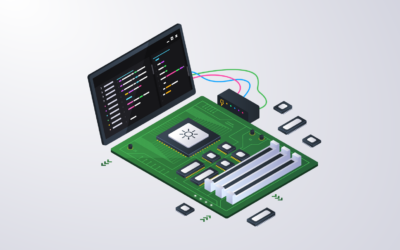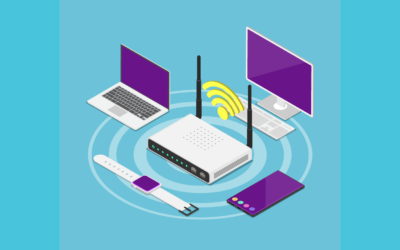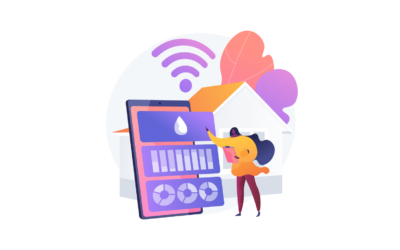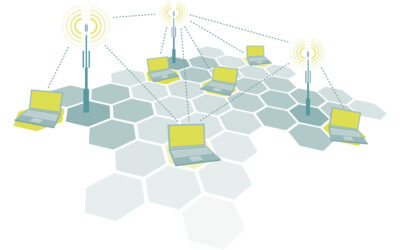The Internet of Things (IoT) has rapidly emerged as a transformative force in the digital age, revolutionizing the way we live and work. As the world becomes increasingly interconnected, IoT systems present boundless opportunities for businesses to innovate and gain a competitive edge in the market.
By harnessing the power of smart, connected devices, companies can gain operational efficiency, improve decision-making, and create new, value-added services tailored to the evolving needs of consumers and industries alike.
IoT projects, however, present significant challenges and must be meticulously designed. At the organizational level, companies should adopt a leadership style that promotes the right culture, attitude, team collaboration, skill level, and synergy across functional departments.
When designing IoT architectures, businesses must consider interoperability and connectivity standards, device interrelationships, sensors, protocols and networks, locations, languages, formats, and time-dependent information across various data models. Additionally, connectivity concerns such as latency, bandwidth, and data frequency must be addressed.
IoT Systems
IoT systems refer to a network of devices communicating and exchanging data over the internet. These systems enable real-time monitoring, data collection, and analysis, leading to operational efficiency, automation, and decision-making in several industries, such as home automation, transportation, healthcare, and manufacturing.
IoT Architecture
IoT architecture is the backbone for implementing diverse IoT projects tailored to specific use cases and contexts. IoT developers create unique architectures designed to address each project’s particular requirements, ensuring seamless integration of IoT devices, efficient data transmission, and effective analysis of collected data. By adapting the architecture to the needs of individual projects, IoT systems can optimize functionality and performance across a wide range of applications. The following is a common list of layers of an IoT architecture:
- IoT Devices: Physical devices, sensors, and actuators that interact with physical environments and collect data.
- Connectivity Layer: Includes communication protocols and networking technologies for transmitting data between devices and systems.
- Edge Computing: Consists of computing resources near the source (devices) that perform data processing and analytics, reducing latency and network traffic.
- Data Processing and Storage Layer: Involves the infrastructure (cloud-based or on-premises) for storing, processing, and managing data.
- Analytics and Intelligence: Involves tools to analyze and process data that generate insights and support decision-making.
- Application Layer: Involves the software applications that provide IoT functionality and end-user experiences.
- Security Layer: Encompasses the security measures and protocols implemented across the IoT architecture to ensure data privacy and protection.
- Management and Orchestration Layer: Involves the tools and services for monitoring, managing, and maintaining the system’s performance, scalability, and reliability.
Krasamo supports the development of IoT systems with open standards—platform-agnostic, interoperable, and flexible environment—providing an architecture that allows seamless connectivity across devices and applications.
IoT Components
Things (IoT Devices). Things are objects and devices with embedded microcontrollers (integrated circuits), system-on-chip (SoC), sensors, actuators, and modules that communicate and perform actions. IoT devices are designed and require a program or code to perform functions.
IoT sensors and actuators serve as integral interfaces that facilitate the precise monitoring and control of various systems. For example, sensors detect alterations in the physical environment, such as temperature or humidity, and subsequently transform this data into a format comprehensible to the associated device (input component). In contrast, actuators interpret electrical signals or voltage outputs and convert them into corresponding physical actions, enabling effective system management.
Microcontrollers (MCUs). Microcontrollers are compact, integrated circuits embedded within electronic devices and systems designed to perform specific tasks efficiently. Comprising a processor core, memory, and input/output (I/O) peripherals on a single chip, MCUs act as the central control unit in numerous embedded systems, managing the operation of devices across various IoT applications.
Their small size, low power consumption, and cost-effectiveness make microcontrollers ideal for controlling and processing tasks in limited-resource environments. Programmed with firmware, MCUs execute designated tasks, process input signals, and regulate output responses, ensuring efficient and dependable electronic system functionality.
Device Software: Low-Level Stack
Embedded Applications. An embedded application is software designed to run on an embedded system, such as a microcontroller, and perform high-level functions or tasks related to the operation of the device or system it is part of to meet real-time requirements. These applications are commonly written in C, C++, and Python.
Firmware. Firmware is software that runs inside a device to control low-level functions and management of components (hardware) of an embedded system. It acts as an intermediary (interface) between the hardware and the embedded application. It is written in assembly language or C programming language. Firmware is stored on non-volatile memory (flash or ROM), where it can remain when the device is powered off.
Firmware functions are the initialization of hardware components (processors, memory, peripheral devices, and input/output interfaces), specific functions, boot operating system, coordinate interactions of components, monitor status, power states, manage configuration settings, etc.
RTOS Operating System
A real-time operating system (RTOS) serves as an integral computer program, offering fundamental functionality and services. This system is widely supported by modern microcontrollers, contributing to the acceleration of development and construction of modular applications through an event-based design.
One of the notable features of an RTOS is its power efficiency. The design of an event-based application, in combination with keeping the microcontroller in a low-power mode, can yield optimal results. This is particularly beneficial for battery-operated devices, extending their operational life and maintaining high performance while conserving power.
The FreeRTOS open-source standard solution for microprocessors and microcontrollers can connect devices to cloud services, edge devices, and mobile devices directly with Bluetooth.
IoT Connectivity
IoT Protocols. IoT protocols are the rules and conventions that govern the communication, transmission, and exchange of data among IoT devices, platforms, and applications. These protocols ensure seamless connectivity, interoperability, and efficient data transfer in IoT systems. In the following paragraphs, we explain the basic concepts of the main categories of IoT protocols: communication protocols, messaging protocols, and transport protocols.
IoT Communication Protocols (Network Layer)
Communication protocols define how IoT devices and platforms interact with each other within a network. They ensure that devices can establish connections (connect, discover, and share information) with each other, regardless of the underlying hardware and software. Examples of IoT communication protocols include Wi-Fi, Bluetooth, Zigbee, and Z-Wave. Each protocol has strengths and weaknesses, such as range, power consumption, and data transfer rates, making them more suitable for specific use cases or environments.
There are other communication protocols, the SPI (Serial Peripheral Interface), I2C (Inter-Integrated Circuit), and UART (Universal Asynchronous Receiver-Transmitter), that are specifically designed for facilitating data exchange within an embedded system (communication between microcontrollers and peripheral components on the same circuit board). These are called bus or serial communication protocols, which facilitate data transfer between devices on a shared communication line or bus.
Wi-Fi. Wi-Fi (IEEE 802.11) is a wireless network protocol utilizing integrated circuit chips in devices such as SoCs, network processors, and MCUs. It operates on 2.4GHz and 5GHz bands and has multiple generations:
- Wi-Fi 4 (IEEE 802.11n) for low-bandwidth IoT products.
- Wi-Fi 5 (IEEE 802.11ac) features dual-band operation, high capacity, and improved power management.
- Wi-Fi 6 (IEEE 802.11ax) offers multi-gigabit speeds for demanding applications.
- Wi-Fi HaLow (IEEE 802.11ah) provides long-range, low-power connectivity for IoT applications in the sub-1 GHz spectrum.
Bluetooth Low Energy (BLE). (IEEE 802.15.4) BLE is a low-powered wireless protocol stack that operates at 2.4 GHz using a short-range radio frequency transmission in a wireless personal area network (WPAN). Bluetooth wireless connectivity usage is the leading choice in smart buildings, manufacturing, commercial, and home applications.
ZigBee. (IEEE 802.15.4 Standard) A low power consumption, two-way wireless protocol communication standard embedded into devices, providing interoperability between millions of ZigBee products in the wireless marketplace. Its stack architecture comprises layers that perform services to the layer above with a reliable transmission mechanism.
Thread. (IEEE 802.15.4 Standard) A low-power mesh networking protocol based on internet protocol (IP), enabling device-to-device and device-to-cloud (IPv6-based) network solutions.
Matter. The matter protocol standard is a unified application layer for IoT devices, providing a common language across different networking technologies. Built on Internet Protocol (IP) networking, manufacturers can choose their preferred network transport. Matter operates over existing networking technologies like Ethernet, Wi-Fi, and Thread.
IoT Messaging Protocols (Application Layer)
Messaging or data protocols deal with the structure, organization, and formatting of data exchanged between IoT devices, platforms, and applications. They ensure that the information being transmitted is understandable and usable by the receiving party. Some widely used IoT messaging protocols are MQTT (Message Queuing Telemetry Transport), CoAP (Constrained Application Protocol), and AMQP (Advanced Message Queuing Protocol). Choosing these protocols depends on the requirements of power, latency, and throughput of the IoT system.
HTTPS (Hypertext Transfer Protocol). A lightweight HTTP client messaging protocol standard running on top of TCP/IP used to create connected MCU applications.
MQTT Protocol. An open-source lightweight connectivity protocol (Machine-to-Machine or M2M) used for sensor communication in small device scenarios. MQTT connections are established securely using TLS (Transport Layer Security) between client and server. MQTT sits on the chip that provides embedded connectivity.
IoT Transport Protocols (Transport Layer)
Transport protocols establish and maintain reliable connections between IoT devices, platforms, and applications. They manage end-to-end data transmission by ensuring integrity, security, and error handling. Common IoT transport protocols include TCP (Transmission Control Protocol) and UDP (User Datagram Protocol).
IoT Gateway
A gateway is a hardware device or software that receives, preprocesses, and transmits data from IoT devices, bridges communication between devices (managing protocol translation and interoperability tasks), and controls field devices before sending data to the cloud.
IoT Edge
IoT Edge is the processing and analysis of data from IoT devices near the physical location (end-points) where data is used or collected. The main benefits are reduced latency for real-time applications and reduced network loads by processing data locally.
IoT Applications
IoT applications are software solutions that enhance functionality and user experience for IoT products, streamlining operations and equipment control. They can run on-premises, in the cloud, or on IoT platforms, with application and analytics software, significantly contributing to IoT project value. IoT applications are web or mobile apps that helps to monitor, control, and manage IoT devices.
IoT Security
IoT systems typically consist of numerous IoT devices, each featuring diverse hardware, software, operating systems, and functionalities that must work together harmoniously. Unfortunately, these devices often lack built-in protection and possess long life cycles, resulting in a substantial network attack surface.
IoT device security is crucial for successfully implementing and operating IoT systems. Therefore, IoT developers should embrace a security-by-design approach, incorporating security measures at every stage of an IoT device’s lifecycle. Key strategies include deploying a solid device management system, ensuring robust monitoring and visibility, utilizing encryption and secure communication protocols, enforcing authentication and access control, and performing regular updates on devices, among other practices.
IoT Platforms
IoT platforms are middleware or software solutions that facilitate the deployment of IoT strategies, with various vendors offering platform-as-a-service (PaaS) tailored to specific segments, industries, and use cases.
These platforms must be flexible, allowing for growth and providing essential capabilities, such as device and network management, application development, security, and more.
Robust IoT device security standards, including end-to-end security and privacy, are crucial to safeguard users and networks. Some prominent IoT platforms include Microsoft Azure IoT, Amazon AWS IoT, and IBM Watson IoT, which provide comprehensive services and infrastructure for IoT solutions. Other open-source software platforms can also run on top of these major platforms, specializing in applications like artificial intelligence and virtual reality.
IoT Consulting Services by Krasamo
- IoT Architecture Design. The IoT architecture’s design and development are crucial in ensuring connectivity and interoperability across devices, applications, sensors, networks, protocols, and data models. In addition, IoT developers are responsible for optimizing the app’s deployment to achieve seamless integration and efficient performance.
- IoT Development. Quality IoT development ensures effective data-driven business operations and develops data-intensive IoT systems with strong connectivity, considering data flow and quality. IoT apps help define device behavior and facilitate data structuring, processing, and management.
- Embedded Development. The team focuses on designing and creating open-source embedded applications tailored to meet real-time requirements while fully supporting the features and functions of microcontrollers.
- BLE Firmware. IoT engineers are responsible for designing and creating code that manages the low-level operations of devices while enabling communication through Bluetooth. In addition, they craft modules featuring customized firmware to ensure seamless performance and adaptability in various IoT applications.
- Wi-Fi Firmware. The IoT team is dedicated to developing firmware for both commercial and industrial applications, compatible with Wi-Fi modules, wireless MCUs, microcontroller SoCs, and low-power network processors, ensuring seamless integration and optimal performance across a range of use cases.
- Nearshore IoT Development. Nearshoring IoT development in Mexico, in partnership with a U.S.-based company with an in-house Nearshoring Development Center, brings various benefits. Skilled nearshore IoT developers integrate with your team, enhancing IoT capabilities, addressing design challenges, and offering customers ongoing support and cost advantages.

